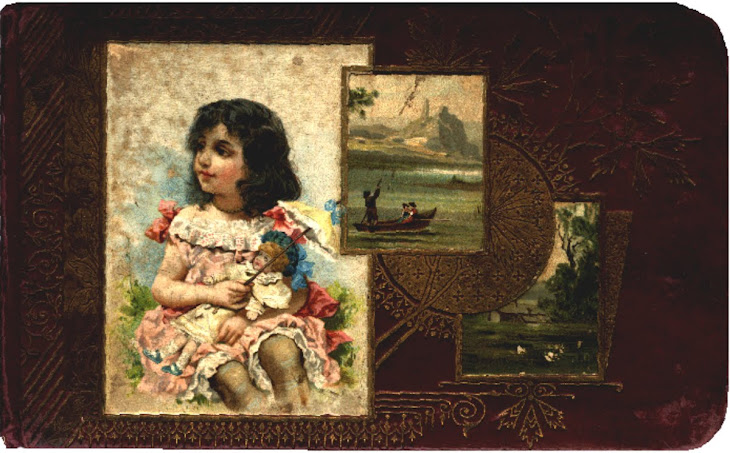Writing letters in the Nineteenth century was the only form of communication between people who lived apart from each other. Sunday evening was the most common time to write to relatives and friends. By candlelight, with a pen and ink bottle, one would write about daily events and the health of friends and family. Most of the writing paper was lined paper folded into a card, so the letter would read like a book. As experts have discovered, the quality of the paper from this era far exceeds the quality of paper today. Except for yellowing of the paper, the letters are in as good a condition today as they were when they were mailed over a century ago. The paper manufactured today has so many chemicals and bleach in it that it quickly disintegrates. It would never last the 130 years that these letters have withstood.
Of course, the paper would have been very valuable and expensive, as stationary often had personalized monograms stamped into the paper. As a result, writers attempted to say as much as possible on one piece of stationary. Ora’s small writing and use of every blank space available makes her letters easy to recognize. She even wrote up the side of the paper and upside down in the space at the top of the page. The letter shown here is a typical letter from Ora.
As letters were written with ink and a steel pen point (which had just recently replaced the quill pens) there were many instances where ink blotches interfered with the writing. The style of writing was very loose and difficult to read in places. The self-contained ink “fountain” pen was introduced in 1884 in New York City. This eliminated blotches and writing became smoother and slightly smaller. However, the inkbottle remained in use until the turn of the century.
Most people had little schooling because farming and work were high priorities. Therefore, spelling was often poor and phonetic. The use of punctuation was also poor, which made understanding the contents rather difficult, and it took me several readings to decipher the full story.
The typical letter would start by indicating when and where the letter was written, for example I would write “Calgary, Alberta, April, 8, 2010” in the top right hand corner. This practice in letters is a lost art and regretfully so. It made it quite simple to identify where the letter came from and to whom it was going. The post office would stamp letters at their point of departure and again when they arrived at their destination. While post offices still stamp at the point of departure they no longer stamp at the destination.
Living conditions were difficult by our standards. There was much work in the day and poor heating in the home where the warmest room in the house was the kitchen, since the wood (or coal) burning stove acted as the furnace for the entire house. Just like modern furnaces, the stove would have heat exhausts leading into ducts that spread the heat around the house. The cast iron stoves would get very hot but with no motorized fan the intense heat did not distribute evenly throughout the house. Hence, the warmest room in the house was the kitchen. Children often slept in the kitchen and letters were usually written in this room. Perhaps this is why people today still tend to group in the kitchen during gatherings.
Hard physical duties, poor heating, and lack of medical science left many to die of pneumonia, consumption, or a disease such as polio or typhoid fever. Once sick with infected lungs, it was very difficult to recover in the damp and cold surroundings. As a result, health of people was a great concern for those in the 1800s, as reflected in the many letters that mention the ill, the dying, and the dead. Many people began to move to the Rocky Mountains where hot springs and dry weather brought hope of recovering from an illness.
Thursday, April 8, 2010
Subscribe to:
Post Comments (Atom)



The Lucy Bensley Genealogy Center has recently received letters written in the 19th century - these have the "stamped monogram" on them but ours are not initials instead are buildings, trains, etc. Were these done by the author or were they on the stationery when purchased? Any information would be appreceiated.
ReplyDeleteWe recently received letters from the 19th century. I notice that you speak of "stamped monogram" - ours have impressed symbols - not initials- in the upper left corner - were these done by the authors or was this design on the stationery when purchased?
ReplyDeleteOur historical society has a number of envelopes with a person's name but no address. Instead it says "present" under the name. It was speculated that these were pieces of mail that would be presented to the person when they called at the post office for their mail, but we are not certain. Another we had contained the person's name with City written under it, which we thought might mean that it was being mailed in the same town where it would be delivered, but also wondered if we had the correct idea for that method of addressing an the correspondence?
ReplyDelete